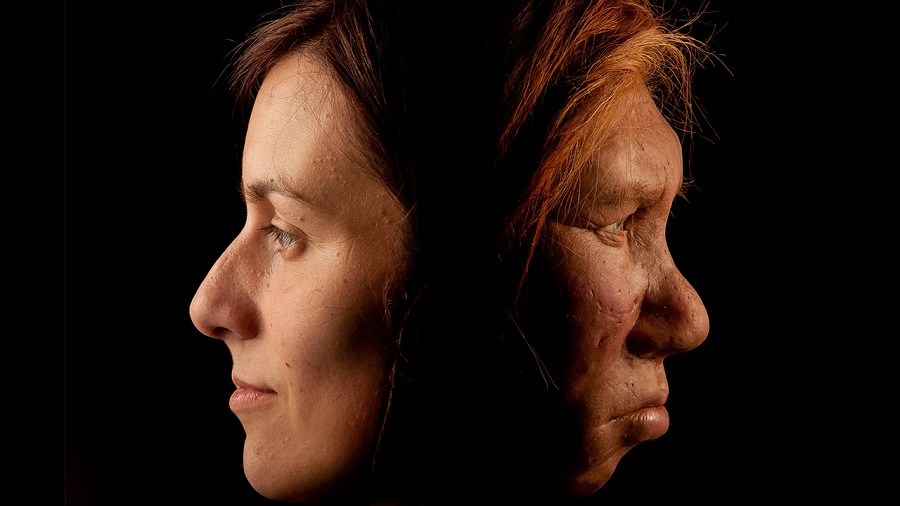ATF3, a gene that leads to a taller nose (from top to bottom), may have been the product of natural selection as ancient humans adapted to colder climates after leaving Africa, according to a new genome-wide association study of facial features in over 6,000 Latin Americans.
“In the last 15 years, since the Neanderthal genome has been sequenced, we have been able to learn that our own ancestors apparently interbred with Neanderthals, leaving us with little bits of their DNA,” said co-senior author Dr. Kaustubh Adhikari, a researcher at University College London and the Open University.
“Here, we find that some DNA inherited from Neanderthals influences the shape of our faces.”
“This could have been helpful to our ancestors, as it has been passed down for thousands of generations.”
For the study, Dr. Adhikari and colleagues used data from 6,486 volunteers across Latin America, of mixed European, Native American and African ancestry, who are part of the CANDELA study, which recruited from five Latin American countries: Brazil, Colombia, Chile, Mexico and Peru.
The researchers compared genetic information from the participants to photographs of their faces — specifically looking at distances between points on their faces, such as the tip of the nose or the edge of the lips — to see how different facial traits were associated with the presence of different genetic markers.
They identified 33 genome regions associated with face shape, 26 of which they were able to replicate in comparisons with data from other ethnicities using participants in east Asia, Europe, or Africa.
In one genome region in particular, called ATF3, the scientists found that many people in their study with Native American ancestry — as well as others with east Asian ancestry from another cohort — had genetic material in this gene that was inherited from the Neanderthals, contributing to increased nasal height.
They also found that this gene region has signs of natural selection, suggesting that it conferred an advantage for those carrying the genetic material.
“It has long been speculated that the shape of our noses is determined by natural selection; as our noses can help us to regulate the temperature and humidity of the air we breathe in, different shaped noses may be better suited to different climates that our ancestors lived in,” said first author Dr. Qing Li, a researcher at Fudan University.
“The gene we have identified here may have been inherited from Neanderthals to help humans adapt to colder climates as our ancestors moved out of Africa.”
“Most genetic studies of human diversity have investigated the genes of Europeans,” said co-senior author Professor Andres Ruiz-Linares, a researcher at Fudan University, University College London and Aix-Marseille University.
“Our study’s diverse sample of Latin American participants broadens the reach of genetic study findings, helping us to better understand the genetics of all humans.”
Sources:
Q. Li et al. 2023. Automatic landmarking identifies new loci associated with face morphology and implicates Neanderthal introgression in human nasal shape. Commun Biol 6, 481; doi: 10.1038/s42003-023-04838-7

